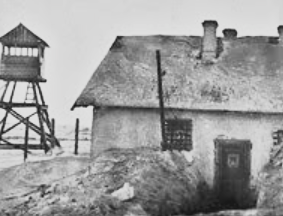The gulags were hell with paperwork — Stalin’s sprawling network of forced labor camps spread across the Soviet Union like scars across a body. The word “Gulag” is an acronym: Glavnoe Upravlenie Lagerei — Main Camp Administration. Bureaucratic, cold, and absolutely lethal. It wasn’t just a prison system — it was a machine designed to grind human beings down into numbers, timber, and gravel.
Between the 1930s and 1950s, millions were sentenced — political dissidents, accused spies, religious minorities, petty criminals, and people who told jokes at the wrong dinner table. Trials were a formality, sentences were brutal, and the geography was merciless. Think Siberia, permafrost, no boots, no food, and quotas to meet. You didn’t just dig holes — you dug holes for the next guy to fall into.
People were worked to death building canals, railways, cities. Starved, frozen, silenced. But they also resisted in subtle ways: whispered poems, secret notes, shared crusts of bread. Aleksandr Solzhenitsyn survived it and wrote The Gulag Archipelago, a literary sledgehammer that exposed the whole rotten system to the world. The USSR tried to bury the truth. He dug it up and left it bleeding on the page.
The gulags weren’t an anomaly. They were the infrastructure of fear. Not every Soviet citizen lived in one — but everyone lived under their shadow.

